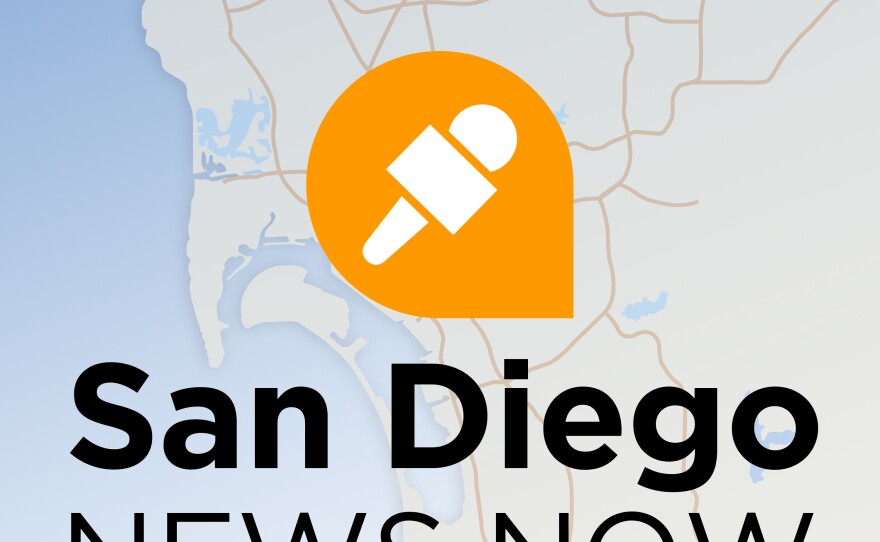It has been less than a year since Andrea Divis moved back to San Diego County into a two-story Oceanside home.
“It’s comfortable and cozy, and really, the backyard is kind of like my oasis,” Divis said.
She deals with a chronic medical condition that does not allow her to go without air conditioning or refrigeration for her medicines.
“When I was in Oregon, I was paying, I don’t know, $150 a month for my utilities,” Divis said. “And now I come here, and on the lowest month, it was $200, and I got upwards of $450, $480.”
Divis saw solar as a solution. She added power-generating panels to her roof, and just inside her garage, there is a new Sonnen battery.

The battery stores excess power generated on her rooftop during the day. Then uses that environmentally friendly energy to power her home between 4 p.m. and 9 p.m. That is when San Diego Gas & Electric increases the cost of electricity to encourage conservation.
“We’ve got sun in Southern California,” Divis said. “Let’s use it to our advantage. We shouldn’t be using crude oil and all of that kind of stuff.”
Her residential Sonnen Battery is made by a German company owned by Shell, a global energy company with a long fossil fuel legacy.
Sonnen has developed software that allows the company to manage thousands of residential batteries, which, if used collectively, become a virtual power plant.
They already have a system up and running in Germany and they are exploring doing the same in several parts of the United States.
A simple modem connection becomes a bridge to building a virtual power reservoir capable of helping California avoid future power shortages.

“We’ve seen the Flex Alerts, 'Hey, we’ve got more demand than production; we need people to cut back,'” said Mike Teresso, who works for Baker Electric Home Energy.
Sonnen partners with Baker to install its batteries and solar panel systems in San Diego County.
“Well, if we have these batteries with stored energy in them, that energy could be pumped out to the grid and help stabilize the grid,” Teresso said.
The company has only sold a few dozen Sonnen batteries in San Diego County, but the partnership is new.
And the batteries do not have to be located locally to be part of the swarm.
The software can connect batteries scattered across the state because Sonnen deals directly with California’s Independent System Operator (CAISO), the agency that runs the electric grid. No utility is needed.
Sonnen negotiates the value of the reservoir of electricity and shares proceeds with the residential owners.
“Hey, that battery can be so much more,” Teresso said. “It’s not just there for backup. It’s not just the stored energy for you to use in an event. And it’s not just for you to use between four and nine when the rates are high. That battery now has real value to the market and you can be part of the California grid becoming more stable and more resilient.”

Sonnen battery owners get a $750 payment upfront for signing up to be part of the virtual power plant. There are small payments for keeping the battery available to the grid because having stand-by power is an important part of the electricity market.
If power is actually drawn from the battery because the grid needs to meet the demand for power, residents get a premium rate from CAISO for the electricity they provide.
Having a certain amount of electricity on standby is important for grid managers as they coordinate supply and demand.
“It’s the next step beyond just putting solar on the roof,” said Blake Richeta, Sonnen’s chairman and CEO. “It should save them more money on their electric bill. It should actually pay them for their service. And help us get rid of fossil fuel-based power plants.”
Sonnen needs 5,000 to 10,000 connected batteries for the virtual power plant to have a significant impact on grid operations, but the potential is much larger than that.
“Having a smarter grid that is more nimble, that can balance generation and load and can handle the difficulties in the grid is, I think, essential for the future,” Richeta said. “Millions of batteries someday should exist. And this will allow us to, amongst other solutions, allow us to decommission all of the coal-burning power plants once and for all.”
But Sonnen faces obstacles as the company works to scale up the idea.
Sonnen needs more people to buy the company’s residential batteries because the system will not work with batteries made by other manufacturers such as Tesla or LG.

State regulators also recently slashed the value of rooftop-generated electricity sold back to the grid, making solar/battery systems less financially attractive.
Industry observers are not sure how that will impact how fast or how many solar/battery systems are installed.
And while there are federal incentives to install the technology, California does not have them.
The California Public Utility Commission’s Public Advocate suggested recently that the state legislature might approve incentives, but that is far from certain.
-
With all the rain and snow we’ve had so far, you might be wondering if we’re getting close to ending the drought. That answer depends on how you define a drought.
-
After years of being stuck in bureaucratic limbo, it appears that the old Central Library in Downtown San Diego will begin offering shelter services to the homeless later this month.









